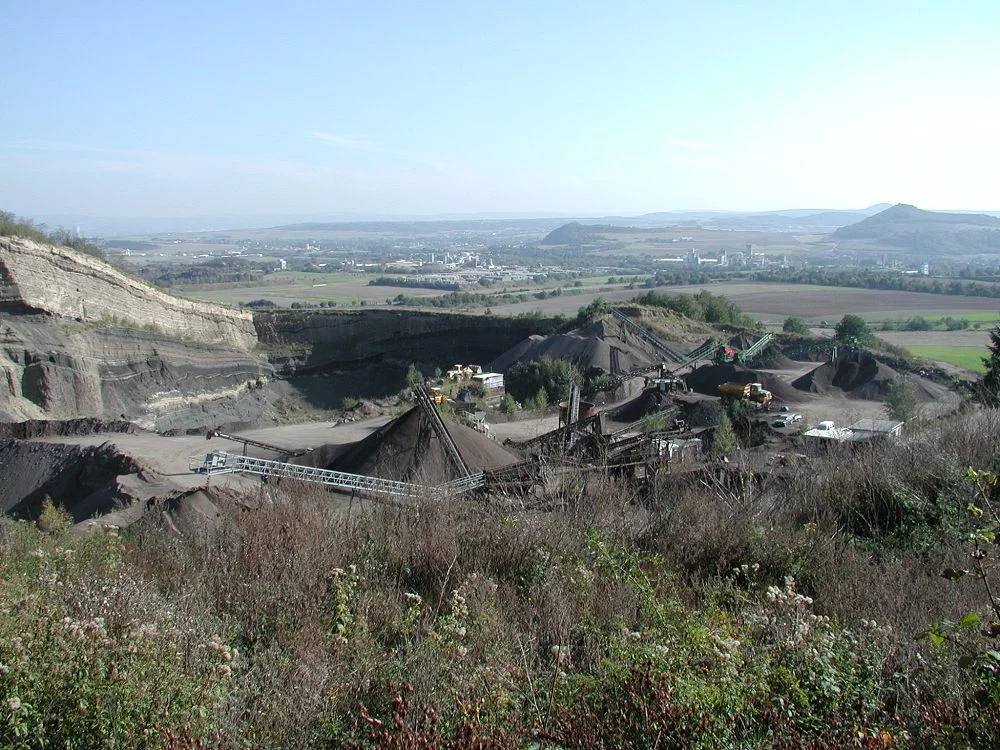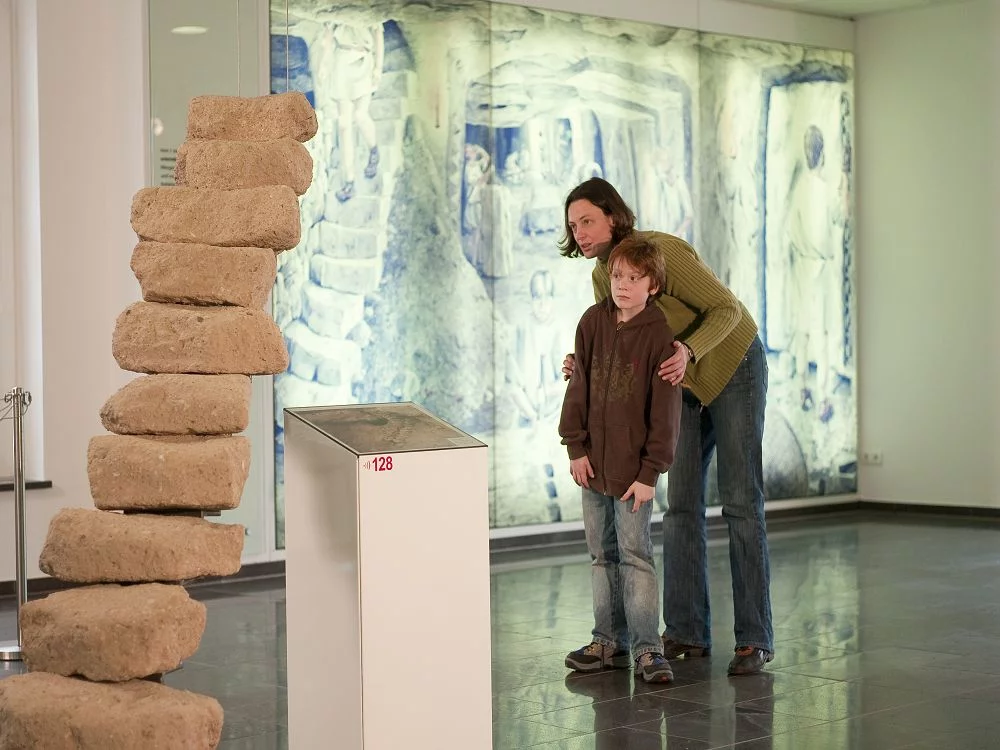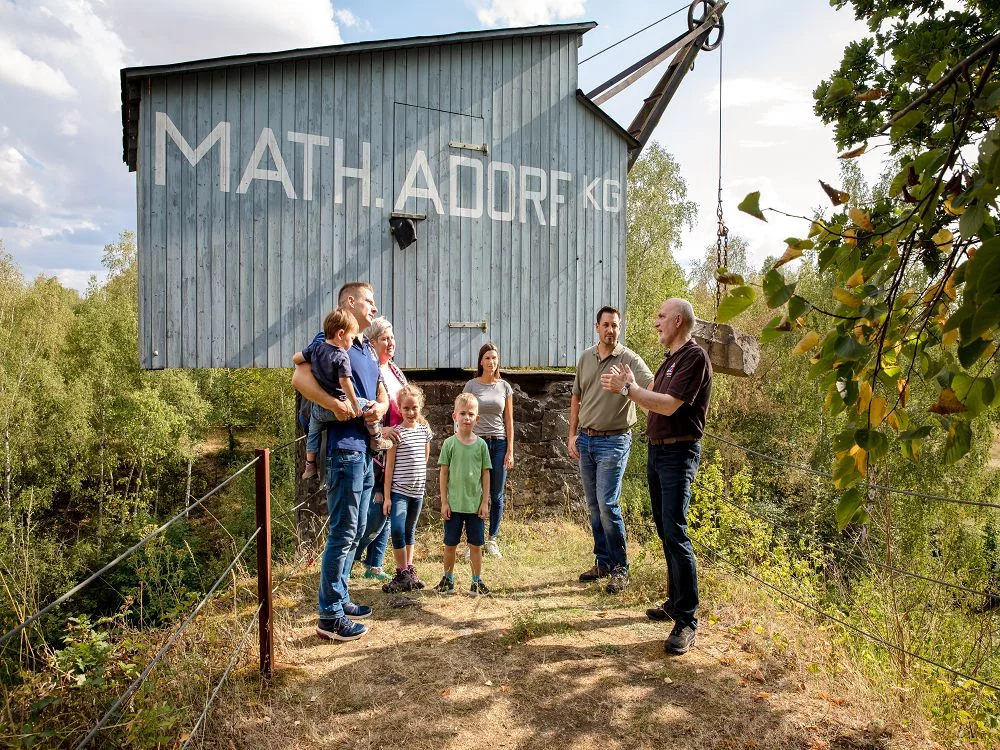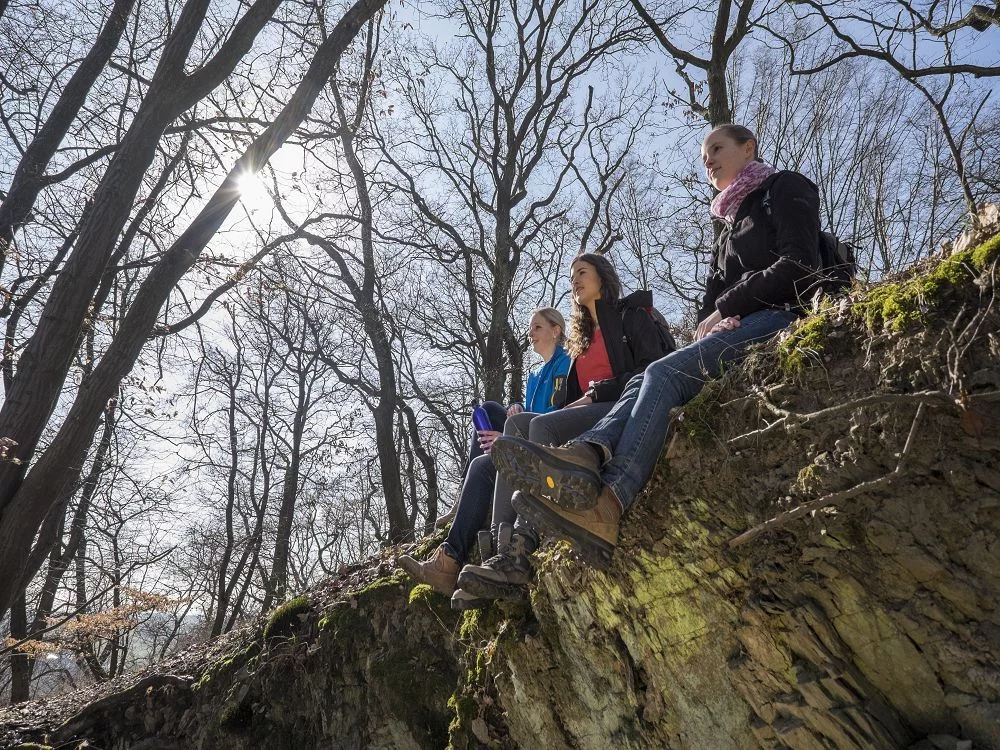A romantic village - an idyllic lake? Unimaginable around 45,000 years ago! Massive explosions blast a huge crater into the landscape, immense quantities of ash are thrown up to form a wall 1.7 kilometers in diameter and masses of rock are hurled miles into the surrounding area. But eventually the volcano calms down and over time rainwater and groundwater collects in the funnel to form a circular lake.
Nach einiger Zeit schafft es ein kleiner Bach, den Kesselrand zu durchbrechen, Gesteinsmaterial einzuschwemmen und dadurch den See nach Norden abzudrängen. Auf dem Schwemmfächer entsteht viele tausend Jahre später um 1200 n. Chr. das Dorf Meerfeld. Die kleine Dorfgemeinschaft lebt damals von der Erzgewinnung, der Fischerei im Maarsee und einer ertragreichen Landwirtschaft. Denn wo zunächst kein Leben möglich scheint, finden Pflanzen später ideale Bedingungen: Vulkanische Böden können Feuchtigkeit sehr lange speichern und sind ausgesprochen nährstoffreich. Um die Anbauflächen zu erweitern, wurde im 19.Jh. sogar der Seespiegel künstlich abgesenkt!
Weitere Infos: Meerfelder Maar – Natur und Geopark Vulkaneifel
Tip: There is an approximately three-kilometre circular trail around the lake, where you can enjoy the lush lakeside vegetation and the impressive carpets of water lilies.











